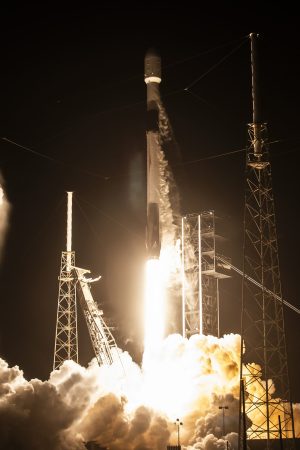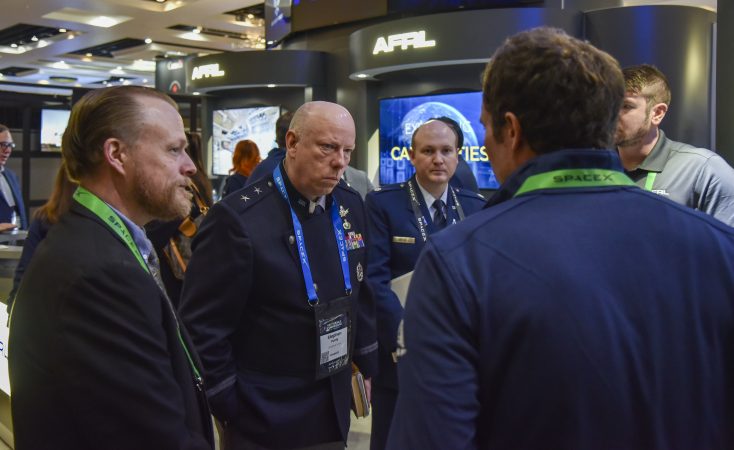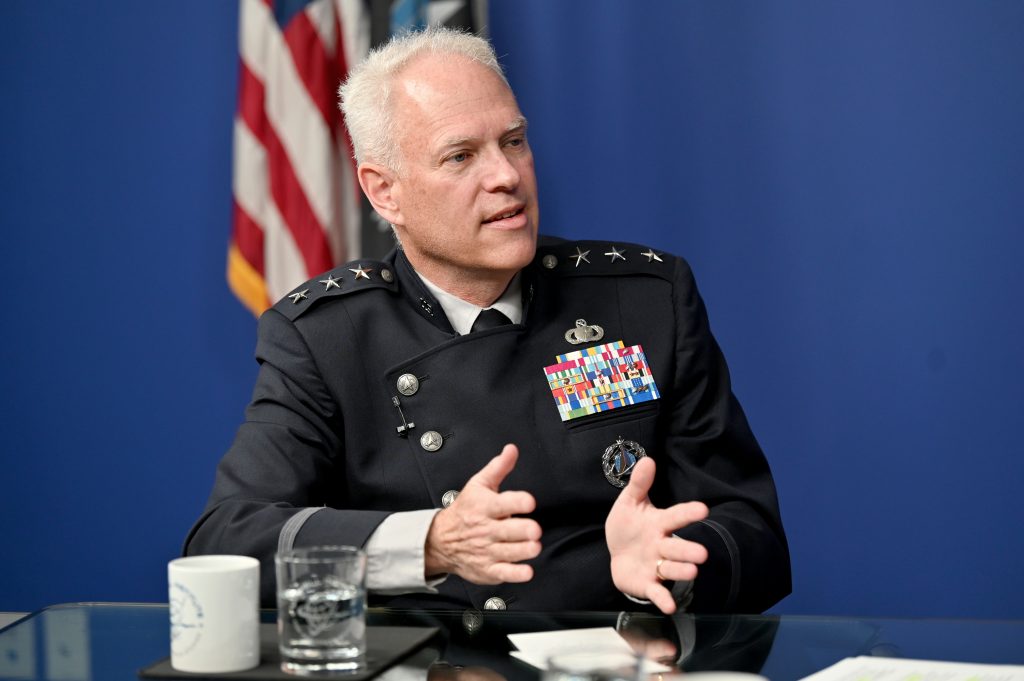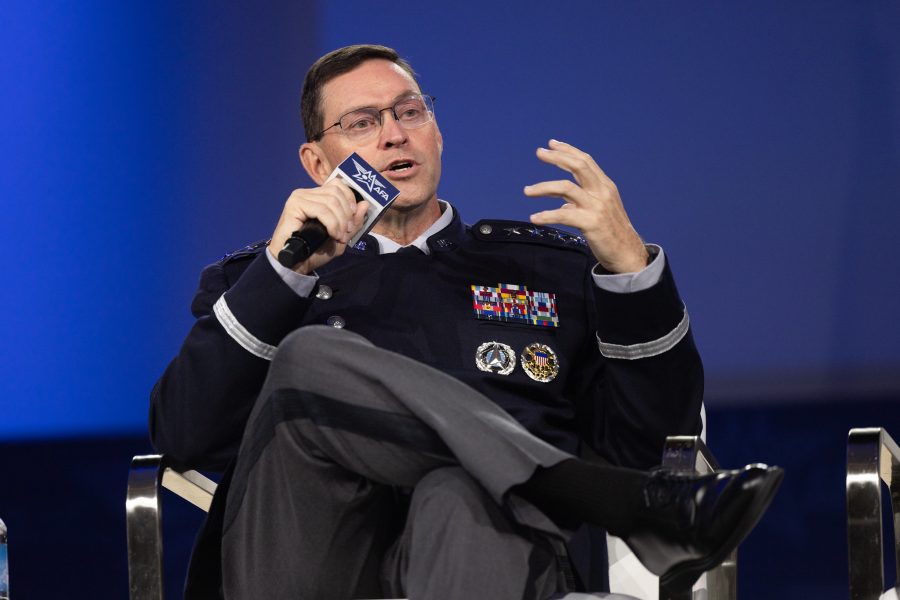The Space Force has a “once-in-a-generation opportunity” to change the way it develops and delivers space capabilities, said Chief of Space Operations Gen. Chance Saltzman at AFA’s Air, Space, and Cyber Conference, and Congress is poised to help make that possible.
Both the House and Senate have pending legislation that seeks to repeal large portions of federal acquisition law and prod the Pentagon to more readily embrace commercial technology.
Defense Secretary Pete Hegseth has also championed rapid procurement, directing faster software acquisition and dismantling the cumbersome requirements process known as the Joint Capability Integration and Development System.
“Nearly every corner of the government is clamoring for change, from the highest levels down,” Saltzman said. “Likewise, I hear from industry leaders that they’re excited to partner in accelerating these changes. We find ourselves in a generational moment. We have the drive, the political will, and the necessity to make the lasting changes in how we field combat-credible space capabilities.”
Saltzman highlighted several ongoing initiatives—some reflecting lawmakers’ reform proposals and others addressing challenges unique to USSF. That includes his push to deepen connections between operational units and acquisition teams and to scour procurement plans to find ways to integrate commercial capabilities and invest in its military and civilian workforce.
Perhaps the Space Force’s biggest organizational shift is its move to combine operators and sustainers into Integrated Mission Deltas under a single commander. Since last year, USSF has established IMDs in four mission areas: space domain awareness, electronic warfare, missile warning, and positioning, navigation, and timing.
The Integrated Mission Deltas, which fall under Space Operations Command, are paired with System Deltas from Space Systems Command, which are charged with supporting rapid capability development for each mission area. SSC has established five Systems Deltas and expects to create another three by the end of October.
In this new construct, Saltzman said, “the commander who owns the readiness problems also owns the tools, the resources, and authorities to address those problems. This allows us to prioritize the fixes that are most important to operational readiness—test, upgrade in ops, and improve quickly as we learn from real-world experience.”
Operational Impact
The benefits of this approach were apparent in August when the Space Force cleared its Deep-Space Advanced Radar Capability for initial operations. A joint team of operators and acquirers partnered to test and transition the system to limited early operations months earlier than would have been possible in the past, Saltzman said.
Space Operations Command boss Lt. Gen. David Miller said the command has made steady improvements in its ability to quickly prepare, launch, and deploy satellites. In a panel discussion Sept. 24, he cited the Rapid Response Trailblazer mission in May, when it launched a GPS III satellite just three months after initial launch notification. That might have taken up to two years in the past, he said.

But the IMDs “owned all the elements of logistics and sustainment,” enabling them to quickly integrate payload and transport and to launch the spacecraft, all while balancing risks to safety and resilience.
Miller also highlighted electromagnetic warfare, where USSF is transitioning from small, focused deployments of its Counter Communication System to a remote, distributed system called Bounty Hunter that allows operators to respond more quickly to EW threats around the world — and, more importantly, better track enemy jamming or other EW activity before it disrupts U.S. or allied systems.
“When an adversary is jamming or disrupting our system, if we understand where that’s at, we’re able to geolocate that capability in the future on seconds-to-minutes timelines,” Miller said.
Coupling that operational imperative with system developers housed in a single IMD, the command has been able to quickly identify capability gaps and iteratively upgrade Bounty Hunter, he added.
“We have literally leaped ahead two weapon system upgrades in the Bounty Hunter electromagnetic surveillance capability,” Miller said. “That’s really due to the partnership where now we have dedicated system deltas working day-to-day on our priorities.”
At SSC, the establishment of system deltas has not only strengthened the acquisition workforce’s connection to the mission their systems are supporting—it’s also pushed problem-solving and decision-making down, from the three-star commanders to captains.
SSC Commander Lt. Gen. Phil Garrant said pushing down those authorities frees commanders from having to intervene in day-to-day problems.
“That frees us up to be more strategic leaders,” he said.
Program Reviews
Meanwhile, at the headquarters level, the Space Force is working to ensure that the acquisition best practices touted by senior leaders and lawmakers are implemented across its program offices.
At the beginning of this year, Maj. Gen Stephen Purdy directed a sweeping review of all the service’s programs to identify cost and schedule risks. In some cases, that led programs to change their contracting strategy or acquisition approach to incorporate more commercial capabilities. In other instances, it led to cancellations.

One of those cancellations was the Protected Tactical Satellite Communications-Resilient program, which was developing jam-resistant satellites. In early July, the service announced it would shift those requirements to another effort, Protected Tactical Waveform, to reduce costs and contracting risk.
The review also led the service to consider new ways to perform missions using commercial capabilities. Perhaps the most notable example is the Geosynchronous Space Situational Awareness Program, whose satellites monitor spacecraft and other objects from geosynchronous orbit.
U.S. Space Command has said it wants GSSAP and other space domain awareness satellites to be more mobile, able to maneuver to avoid debris or observe objects of interest. So, as part of Purdy’s review, SSC reached out to industry to see if commercial providers could meet those requirements.
The response was a resounding yes, which led the Space Force to pursue a follow-on GSSAP effort, dubbed RG-XX, which will field a fleet of small, maneuverable satellites that can be refueled in orbit.
Purdy told reporters in a Sept. 24 roundtable that the service continues to review whether major changes to existing efforts make sense from a cost and engineering risk perspective.
“You have to really balance what’s feasible and possible and what’s near-commercial with what’s actually operationally suitable,” he said.
Workforce Investment
Amid ongoing organizational and process changes, the Space Force is also rethinking the way it trains and invests in its acquisition workforce.
Saltzman announced a first-of-its-kind initial qualification course for new acquisition officers, a 10-week course that dives deep into the complexities of program management, testing, and contracting. It also gives officers a chance to learn from experts in industry and to be mentored by senior Space Force leaders.
USSF wants to bolster its civilian acquisition team, which Saltzman has said was disproportionately affected by the Trump administration’s cuts to the federal workforce earlier this year. The Space Force lost about 14 percent of its civilian personnel to early retirement and deferred resignation programs, many of them acquisition experts. That’s nearly double the average across-the-government rate of workforce reductions.
Saltzman told reporters the service sought and won waivers from the Office of the Secretary of Defense to hire—or in some cases rehire—replacements. Now, leaders are determining which acquisition specialties to prioritize.
“We’re going back through and saying, ‘let’s use this as an opportunity,’” he said. “How do we reshape the workforce? How do we use the hiring authorities to put people where we need them to do the right work?” Part of that reshaping involves balancing the need for an experienced workforce with the imperative to grow expertise more organically over the long term, Garrant said. For example, while SSC could opt to hire a retired acquisition officer with years of experience to work as a contractor, it may benefit the service to play the long game and instead hire someone they can develop for the future.

the Mitchell Institute’s Spacepower Advantage Center of Excellence.
Photo by Mike Tsukamoto/Air & Space Forces Magazine
That’s a difficult balancing act amid major acquisition reforms. Garrant highlighted the ongoing work to rewrite the Federal Acquisition Regulation, which governs how government agencies buy products and services. The goal is to simplify procurement regulations and make federal buying more flexible, but lowering guardrails and making policies less prescriptive also means acquisition officers will end up making more decisions.
“In a lot of ways, you’re now relying on the contracting officer to make a lot more choices on their own, and in those cases, you really want a more experienced contracting officer,” he said. “So, it’s a balance of that experience and non-experience.”
In the coming months, Garrant said, his goal is to strategically build back the service’s acquisition workforce, so that even if it’s leaner than in years past, it’s ready to start implementing the coming reforms.


